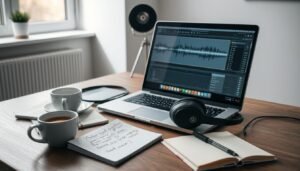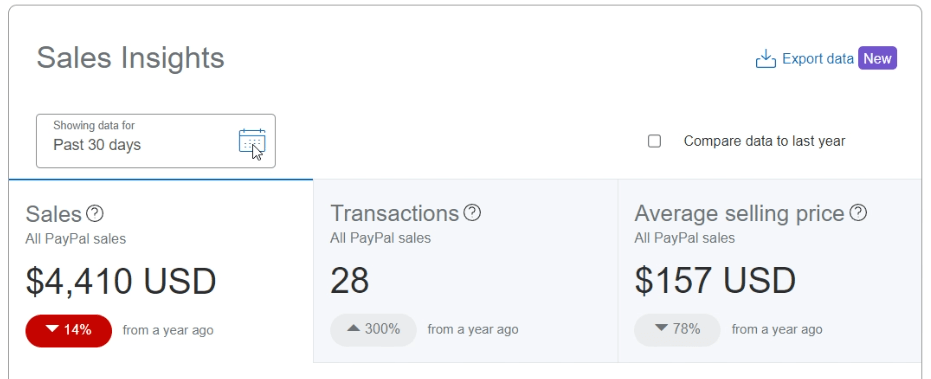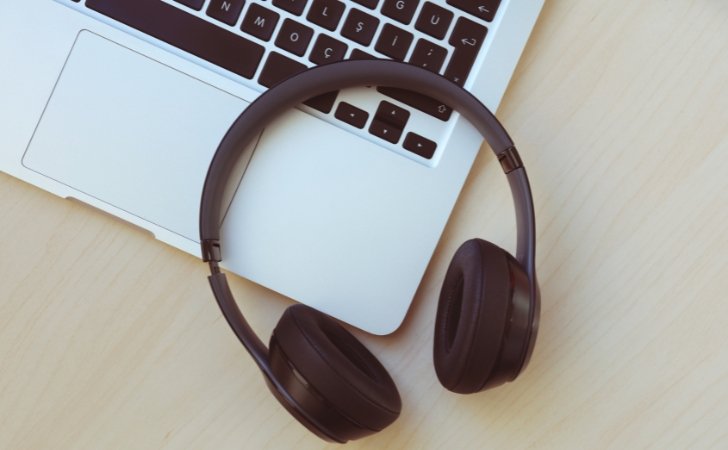AFFILIATE DISCLOSURE
This post may contain affiliate links. An affiliate means Escribr may earn referral fees if you make a purchase through our link without any extra cost to you. It helps to keep this blog afloat. Thanks for your support!
Did you know that by visiting this blog, you are doing good in the world? READ THIS.
Ever thought about why manual audio transcription is still key, even with AI technology?
Automatic software can get up to 95% accurate, but there’s something special about doing it by hand.
This guide will show you the basics of manual transcription, perfect for beginners.
With more need for audio content in media, education, and research, knowing how to transcribe manually is valuable.
You’ll learn the skills needed for accurate transcription.
Plus, you’ll find out the best tools and methods to make your work easier.
This guide is for anyone looking to improve their transcription skills or learn the process from scratch.

Understanding Audio Transcription
Audio transcription is the act of turning spoken words into written text.
It’s crucial in many areas, making communication and documentation easier. It’s different from translation, which changes text from one language to another.
Audio transcription keeps the original language, focusing on capturing spoken words accurately.
The digital age has made transcribed content more important.
Businesses and people use it to make communication better and keep important talks safe.
This is especially true in education, journalism, and law, where sharing correct info is key.
Automatic transcription software’s accuracy can vary a lot.
Good audio quality and clear, American English are needed for the best results, usually over 80% accurate.
Experienced transcribers can write down one hour of audio or video in three to five hours.
The time it takes depends on the audio quality, number of speakers, and accents.
There are different ways to transcribe audio, each with its own challenges.
Verbatim transcription, which includes every word and pause, takes more time than other methods.
Many fields use transcription to document talks, make things more accessible, and save important conversations.
Experts in education, market research, journalism, and law often use transcription services to make their work easier and share information better.
What is Transcription?
Transcription is the act of turning spoken words into written text.
It makes communication clearer and more accessible. Knowing what is transcription is key for professionals and businesses.
They use it to make audio content useful for different needs.
Transcription can be in many formats like SRT, TXT, and HTML. This makes it useful in many areas.
In today’s world, transcription is vital for sharing information. It’s needed in healthcare, law, and media. Each field uses transcription in its own way.
Healthcare, for example, needs accurate transcription for patient records and clear communication.
Some people confuse transcription with translation.
Transcription is about writing down spoken words. Translation is about changing text from one language to another. Knowing the difference shows why transcription is so important.
There are different ways to do transcription. You can use software or have a human do it.
Automatic tools are fast but might not be perfect. Manual transcription takes longer but is more accurate.
Transcription helps people with disabilities and reaches more people.
It makes online content easier to find and improves SEO.
This is good for businesses that want more website visitors.
| Transcription Method | Time Required | Accuracy Level |
|---|---|---|
| Manual Transcription | 2-10 hours per hour of audio | High accuracy |
| Automatic Transcription Software | Minutes | Varies, may produce errors |
| Human Transcription Services | 1-3 hours per hour of audio | Very high accuracy |
In short, transcription makes communication clearer and more efficient. It’s essential for today’s professionals.
Benefits of Transcribing Audio
Transcribing audio has many advantages that boost productivity and efficiency.
One key benefit is creating written transcripts. This makes workflows smoother and editing easier. It also saves time by allowing for quicker feedback and edits.
Moreover, written content can improve SEO, making it easier to find online.
This is a big reason to consider why transcribe audio. It makes content more accessible and helps reach a wider audience.
In schools, transcribing interviews or lectures helps students remember more.
For instance, a 30-minute interview can take about 2 hours to transcribe by hand. This method offers high accuracy, especially with complex topics or accents.
Transcription methods can be tailored to different needs.
Hybrid models mix manual and automated methods.
This approach balances cost and speed. Outsourcing transcription helps manage large amounts of audio data efficiently.
| Transcription Method | Speed | Cost | Accuracy |
|---|---|---|---|
| Manual Transcription | 1 hour for 15 minutes of audio | Higher cost | Very high |
| Automated Transcription | Minutes for lengthy audio | Lower cost | Moderate to low |
| Hybrid Transcription | Speed varies | Moderate cost | High |
Choosing to transcribe audio brings many benefits. It improves workflows, makes content more accessible, and enriches it for various uses.
Understanding these transcription advantages helps individuals and organizations boost productivity and communication.
Common Uses for Transcription Services
Transcription services are used in many areas. They help make things more efficient and easier to access.
Media companies use them to turn interviews into written scripts. This helps more people understand what was said.
Education also benefits from transcription. It helps create searchable notes from lectures. This gives students great study tools.
In law, transcription is key for keeping accurate records of court cases. It helps follow legal rules and makes it easier to look back at past cases.
Medical transcription is also critical. It requires special skills to record important patient information and medical records accurately.
Market research companies use transcription to analyze consumer feedback. This helps them make better business decisions. Each area shows how important accurate transcription is. It leads to better communication and work efficiency.
As more people need these services, being accurate and reliable is crucial. It meets the needs of organizations everywhere.
| Industry | Application | Benefits |
|---|---|---|
| Media | Creating scripts from audio recordings | Increased audience engagement |
| Education | Transcribing lectures | Searchable study materials |
| Legal | Documenting court proceedings | Compliance and easy reference |
| Medical | Transcribing patient records | Accuracy in documentation |
| Market Research | Transcribing interviews | Detailed consumer feedback analysis |
Types of Transcription Methods
Transcription comes in many forms, each with its own purpose. From ensuring accuracy in legal documents to making content easy to read, these methods are crucial. They change how we turn audio or video into text.
Verbatim transcription captures every word, including small details. It’s key in qualitative research, where every word matters.
Intelligent verbatim transcription focuses on the main points, leaving out the extra stuff.
Edited transcription improves grammar and organizes content for better understanding. It’s perfect for formal publications or reports.
Phonetic transcription uses symbols for sounds, important for language studies. Orthographic transcription follows standard language rules, ideal for research that needs to stick to the norm.
Choosing between manual vs. automatic transcription depends on your needs.
Manual transcription is accurate but takes longer. Automated options are faster but might struggle with accents and complex terms.
| Transcription Method | Description | Ideal For |
|---|---|---|
| Verbatim | Word-for-word transcription including all details | Qualitative research, legal documents |
| Intelligent Verbatim | Cleans up unnecessary words while maintaining meaning | Marketing materials, social media |
| Edited | Corrects grammar and organizes content for clarity | Publications, formal reports |
| Phonetic | Uses symbols to represent sounds | Linguistic studies and pronunciation analysis |
| Orthographic | Standard language transcription | Research requiring conventional expression |
How to Transcribe Audio to Text Manually
Transcribing audio to text manually is a detailed task. It requires listening skills and writing accuracy. This guide will help you through the steps, making your transcript clear and readable.
Listening and Decoding the Audio
Listening well is key to transcribing accurately. Start by getting to know the audio content. Listen a few times to grasp the context.
Pay attention to accents and subtle cues. These can change how you understand the audio. Note pauses and emphasized words. They help in understanding the meaning.
If unsure, rewind the audio. This ensures you get every detail right. Listening closely is important for capturing the conversation flow.
Writing the Transcript by Hand
After decoding the audio, start writing. Pick a format that makes your transcript clear. Use paragraphs and timestamps for long recordings.
This makes your work organized and easy to follow. Try to avoid distractions to keep your accuracy high. Using a foot pedal or taking breaks can help.
These tips will improve your transcription skills. Your final document will accurately reflect the original content.

Tools You Need for Manual Audio Transcription
For manual audio transcription, the right tools are crucial. Quality headphones are key for clear audio. They help you catch every detail in speech. These audio transcription equipment tools also keep you focused, even in noisy places.
Choosing the right transcription tools is important too. Software like Bluedot is great for different audio types and makes transcription easier. Google Docs is a free option for voice typing, perfect for those watching their budget.
Foot pedals are also very helpful. They let you control audio without using your hands. This makes transcription faster and more accurate.
A quiet workspace is essential for focus and accuracy. A calm environment helps you catch every word. Here’s a table of popular transcription tools, their features, and costs:
| Tool Name | Type | Features | Cost |
|---|---|---|---|
| Express Scribe | Software | Foot pedal support, multiple audio formats | Free & Paid |
| The FTW Transcriber | Software | Automatic timestamps, compact interface | Paid |
| Inqscribe | Software | Snippet creation, customizable shortcuts | Paid |
| Transcribe | Software | Traditional typing, dictation options | Paid |
| OTranscribe | Web App | User-friendly, open-source | Free |
These tools offer various features for different needs. Whether you need to capture every word or focus on clarity, the right tools can help. Picking the best manual transcription tools can make your work better and faster.
Best Practices for Manual Transcription
Following the best practices for manual transcription makes sure the final transcript is accurate. Transcriptionists can improve their work by using specific tips. They should focus on adding timestamps and editing for clarity.
Using Timestamps
Adding timestamps to the transcription makes it clearer and more useful. Timestamps help listeners find specific parts of the audio easily. This is especially helpful in interviews or discussions, where it’s important to know who is speaking and when.
By using timestamps, transcribers keep their work organized. It also lets readers quickly find important parts of the transcript.
Editing for Clarity
Editing the transcription for clarity is a key step. After finishing the first draft, it’s important to review and refine the text. This involves fixing grammar, making unclear phrases clear, and removing unnecessary words.
This careful editing makes the transcript more accurate and professional. It ensures the document is ready for its intended audience.

| Practice | Description |
|---|---|
| Timestamps | Incorporate timestamps to mark significant audio moments and clarify speaker changes. |
| Thorough Editing | Review and refine the transcript to correct errors and enhance clarity. |
| Clear Audio | Ensure excellent audio quality to facilitate accurate transcription. |
| Moderate Speaking Pace | Encourage speakers to talk clearly and at a moderate pace for optimal results. |
Challenges of Manual Transcription
Manual transcription comes with its own set of challenges. Transcribers must listen carefully to audio files and write them down accurately. Problems like bad audio quality, background noise, and overlapping voices make it hard.
Fields like law, medicine, and research need precise transcriptions. They require capturing details like accents and technical terms that machines can’t handle. It takes about four hours of work for every hour of audio, showing how time-consuming it is.
Working long hours can cause fatigue and mental strain. After eight hours, productivity starts to fall. This makes it tough for transcribers to stay accurate while they’re tired.
To tackle these issues, taking breaks and using special software can help. These steps improve focus and reduce mistakes. It’s crucial to refine how we work to avoid errors.
| Challenges | Impact | Strategies to Overcome |
|---|---|---|
| Poor audio quality | Leads to inaccuracies in transcription | Use noise-canceling headphones to enhance clarity |
| Background noise | Distracts from key audio elements | Transcribe in a quiet environment |
| Overlapping dialogue | Results in lost context and meaning | Play segments multiple times for clarity |
| Occupational fatigue | Reduces overall accuracy and productivity | Schedule regular breaks during transcription sessions |
| Complex language or accents | Challenges accurate capture of information | Utilize audio playback tools to assist understanding |
Helpful Tips for a Smooth Transcription Process
Transcribing audio can feel overwhelming. But, there are tips for transcription process to make it easier.
First, find a quiet place to work. A smooth transcription technique needs a quiet spot to focus better and be more accurate.
Next, break the audio into smaller parts. Working with short clips is easier and less stressful. It helps you avoid feeling rushed.
It’s important to save your work often. Losing your progress can be frustrating and waste time. This can hurt your improving transcription efficiency.
Also, learn any special terms in the audio. Knowing the context and jargon makes understanding and quality better.
Technology can also help. Noise reduction apps can make the audio clearer. These tools help by cutting down background noise, making it easier to hear.
Remember, transcribing one hour of audio can take several hours by hand.
Using automated tools can speed up the work, especially with lots of audio.
Wrap-Up
This guide has covered the key points of transcribing audio to text manually. It shows how important manual transcription is today. Transcription helps many fields like journalism, law, and education, making things more accessible.
Even though automated methods are getting better, learning to transcribe by hand is still valuable. It’s great for improving your site’s SEO and making your content easier to find. Manual transcription is accurate and affordable, especially for small tasks.
As we wrap up this guide, remember that learning transcription can open many doors. It helps in sharing information clearly and widely. Keep exploring and learning about transcription to stay up-to-date with new tech and standards.










